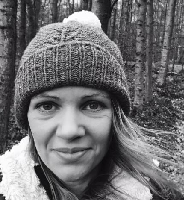Hannah Smith is Digital Archives Manager at Historic Environment Scotland. She attended IDCC 2020 with support from the DPC's Career Development Fund which is funded by DPC Supporters.
On the first day of the main conference at the 15th IDCC I opted to attend the mornings sessions on the theme of ‘Collaboration on Digital Curation’, with Ixchel Faniel’s session on ‘Identifying Opportunities for Collective Curation During Archaeological Excavations’ as the main source for this blog post.
Ixchel’s presentation discussed research findings from a funded project called ‘The Secret Life of Data’, which looked at the creation, management and re-use of archaeological data derived from excavations. As a recovering archaeologist myself, now a digital archivist this session really appealed to me. My organisation, Historic Environment Scotland holds the National Record of the Historic Environment, and a great deal of our material has been deposited through archaeological events across Scotland.
Ixchel discussed the need for greater collaboration within archaeological projects, from the ground up. We often talk about the need for better collaboration and communication in terms of management of the data within repositories, and with use and reuse of data. It was therefore interesting to hear of the issues people are facing whilst creating and analysing the data. The project identified areas where collaboration was lacking between the different people involved in an archaeological excavation, using 4 excavations as case studies and carrying out interviews over 2 years. In some cases, it was revealed that excavation methods between trenches on site differed and that lack of archaeological evidence therefore could be a result of inconsistent methods. Reminds me of the phrase I was taught at university “absence of evidence is not evidence of absence”.
The research, however, focussed on the excavators, or site supervisors, and the specialists brought in to analyse the material culture, as often these people are not based on site therefore collaboration and communication is key. This was often a very disjointed and inconsistent process, with specialists using their own standards and guidelines, some visiting the sites while others never set foot near the excavation, all leading towards skewed research findings. The main research questions were “How are specialist data being integrated with excavation data during archaeological excavation projects?” and “What opportunities for collective curation might improve the integration of specialist data with excavation data?”
The main recommendations as part of the project were around collective development of documentation guidelines and data agreements as well as communicating clearly through regular meetings to facilitate discussions and open conversation. I think we can all benefit from implementing these in our own workplaces and disciplines.










































































































































